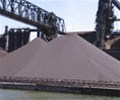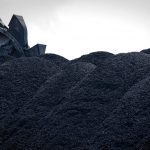Brazilian miner Vale on Wednesday bumped up its forecast for iron ore output this year after a stronger-than-expected first half, driving its shares higher
The company, one of the world’s largest iron ore producers, said in a securities filing it now expects output between 323 million and 330 million metric tons in 2024, raising a previous forecast of 310 million to 320 million.
The move comes after the mining giant said earlier this year it was confident about meeting the top end of the previous guidance, as in early 2024 production came in ahead of its own targets
“We estimate changes to production guidance will raise full-year EBITDA (earnings before interest, taxes, depreciation and amortization) consensus expectations by 4% RBC analysts said. “Vale remains our preferred exposure to the iron ore space”
The miner’s Brazil-traded shares rose around 2% on Wednesday, also buoyed by higher global iron ore prices, making it one of the top gainers on benchmark stock index Bovespa BVSP, which slid 0.3%
Vale saidin a presentation that while it planned to produce 144 million tons of iron ore in the first half, output totaled 151 million tons. It cited greater operation stability and lower production deviation among the reasons for the strong performance
“This guidance increase is a confidence confirmation,” Wood Mackenzie analyst Artur Bontempo said, despite sayingthat Vale’s higher output waslikely to bringadditional pressure on the already “moody” iron ore market
Market players have voiced concerns about top consumer China’s faltering demand outlook and economic recovery, which has led prices to drop year-to-date. Vale, however, sees a “balanced” market in 2024 and 2025
Margins this year have been positive across all operations despite the price pressure, the firm said
The Brazilian company slightly lowered its forecast for nickel output in 2024 to between 153,000 and 168,000 tons from between 160,000 and 175,000, a move it said reflected a partial divestment from Vale Indonesia completed in July.
Nickel and copper output costs this year are nevertheless expected to be lower than initially predicted, it said.
Source: Reuters (Reporting by Gabriel Araujo, Additional reporting by Marta Nogueira in Belo Horizonte: Editing by Jason Neely, Mark Potter and Angus MacSwan)






